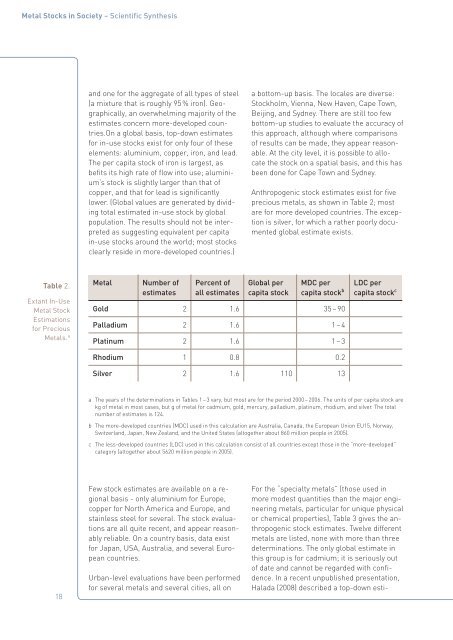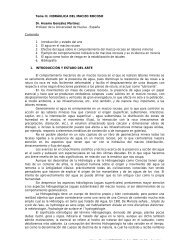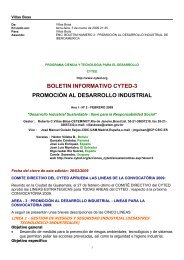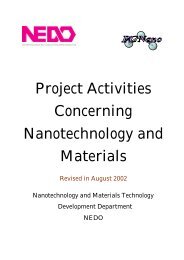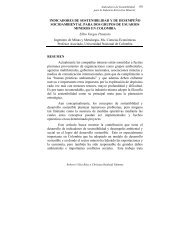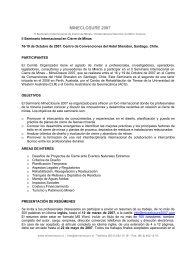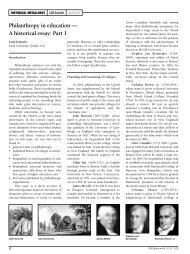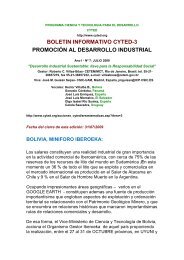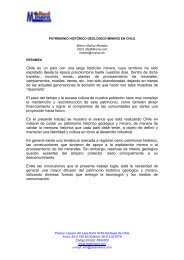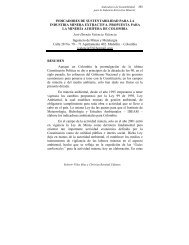Metal Stocks in Society â Scientific Synthesis - UNEP
Metal Stocks in Society â Scientific Synthesis - UNEP
Metal Stocks in Society â Scientific Synthesis - UNEP
- No tags were found...
Create successful ePaper yourself
Turn your PDF publications into a flip-book with our unique Google optimized e-Paper software.
<strong>Metal</strong> <strong>Stocks</strong> <strong>in</strong> <strong>Society</strong> – <strong>Scientific</strong> <strong>Synthesis</strong>and one for the aggregate of all types of steel(a mixture that is roughly 95 % iron). Geographically,an overwhelm<strong>in</strong>g majority of theestimates concern more-developed countries.Ona global basis, top-down estimatesfor <strong>in</strong>-use stocks exist for only four of theseelements: alum<strong>in</strong>ium, copper, iron, and lead.The per capita stock of iron is largest, asbefits its high rate of flow <strong>in</strong>to use; alum<strong>in</strong>ium’sstock is slightly larger than that ofcopper, and that for lead is significantlylower. (Global values are generated by divid<strong>in</strong>gtotal estimated <strong>in</strong>-use stock by globalpopulation. The results should not be <strong>in</strong>terpretedas suggest<strong>in</strong>g equivalent per capita<strong>in</strong>-use stocks around the world; most stocksclearly reside <strong>in</strong> more-developed countries.)a bottom-up basis. The locales are diverse:Stockholm, Vienna, New Haven, Cape Town,Beij<strong>in</strong>g, and Sydney. There are still too fewbottom-up studies to evaluate the accuracy ofthis approach, although where comparisonsof results can be made, they appear reasonable.At the city level, it is possible to allocatethe stock on a spatial basis, and this hasbeen done for Cape Town and Sydney.Anthropogenic stock estimates exist for fiveprecious metals, as shown <strong>in</strong> Table 2; mostare for more developed countries. The exceptionis silver, for which a rather poorly documentedglobal estimate exists.Table 2.Extant In-Use<strong>Metal</strong> StockEstimationsfor Precious<strong>Metal</strong>s. a<strong>Metal</strong>Number ofestimatesPercent ofall estimatesGlobal percapita stockMDC percapita stock bGold 2 1.6 35 – 90Palladium 2 1.6 1 – 4Plat<strong>in</strong>um 2 1.6 1 – 3Rhodium 1 0.8 0.2Silver 2 1.6 110 13LDC percapita stock ca The years of the determ<strong>in</strong>ations <strong>in</strong> Tables 1 – 3 vary, but most are for the period 2000 – 2006. The units of per capita stock arekg of metal <strong>in</strong> most cases, but g of metal for cadmium, gold, mercury, palladium, plat<strong>in</strong>um, rhodium, and silver. The totalnumber of estimates is 124.b The more-developed countries (MDC) used <strong>in</strong> this calculation are Australia, Canada, the European Union EU15, Norway,Switzerland, Japan, New Zealand, and the United States (altogether about 860 million people <strong>in</strong> 2005).c The less-developed countries (LDC) used <strong>in</strong> this calculation consist of all countries except those <strong>in</strong> the “more-developed”category (altogether about 5620 million people <strong>in</strong> 2005).18Few stock estimates are available on a regionalbasis - only alum<strong>in</strong>ium for Europe,copper for North America and Europe, andsta<strong>in</strong>less steel for several. The stock evaluationsare all quite recent, and appear reasonablyreliable. On a country basis, data existfor Japan, USA, Australia, and several Europeancountries.Urban-level evaluations have been performedfor several metals and several cities, all onFor the “specialty metals” (those used <strong>in</strong>more modest quantities than the major eng<strong>in</strong>eer<strong>in</strong>gmetals, particular for unique physicalor chemical properties), Table 3 gives the anthropogenicstock estimates. Twelve differentmetals are listed, none with more than threedeterm<strong>in</strong>ations. The only global estimate <strong>in</strong>this group is for cadmium; it is seriously outof date and cannot be regarded with confidence.In a recent unpublished presentation,Halada (2008) described a top-down esti-


